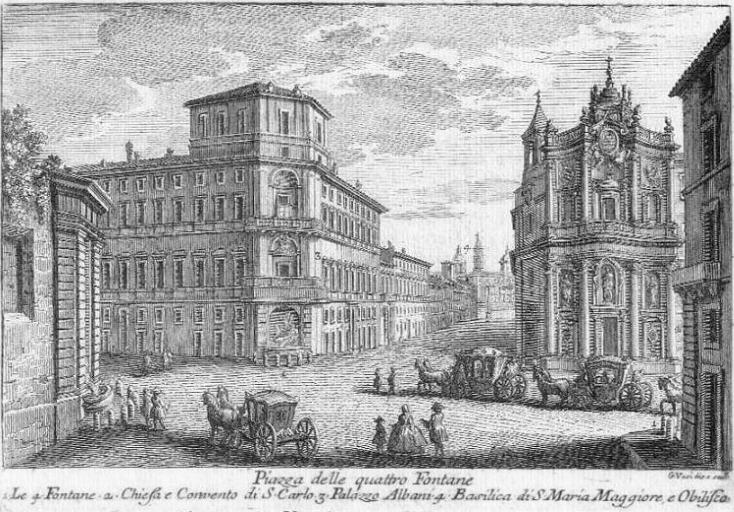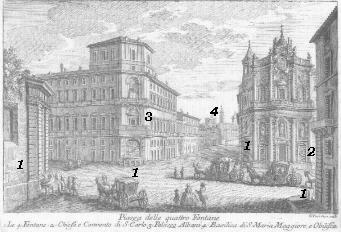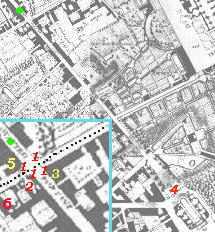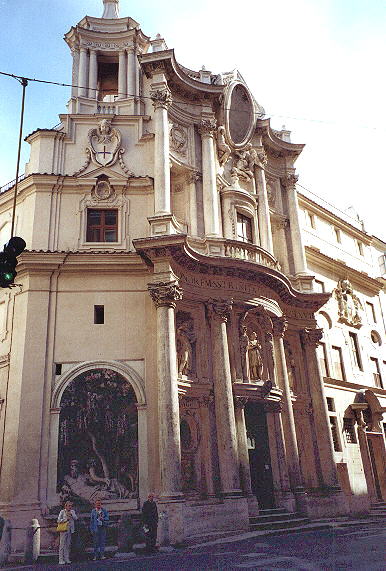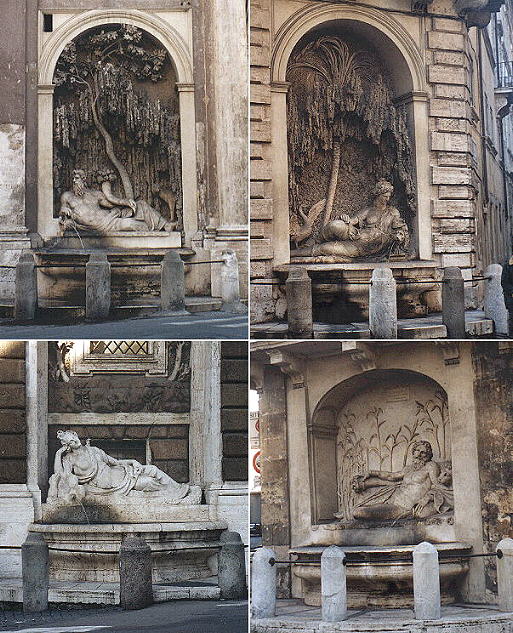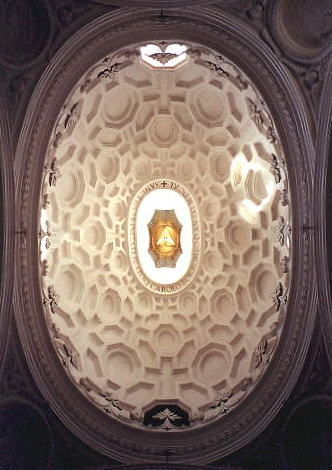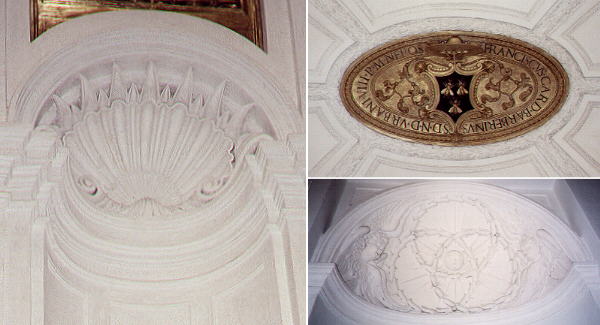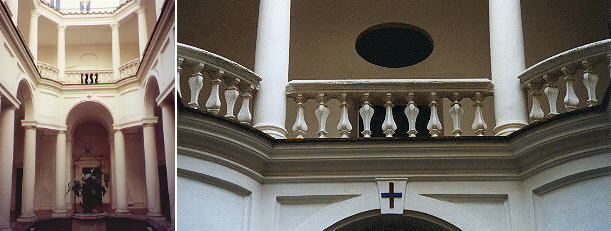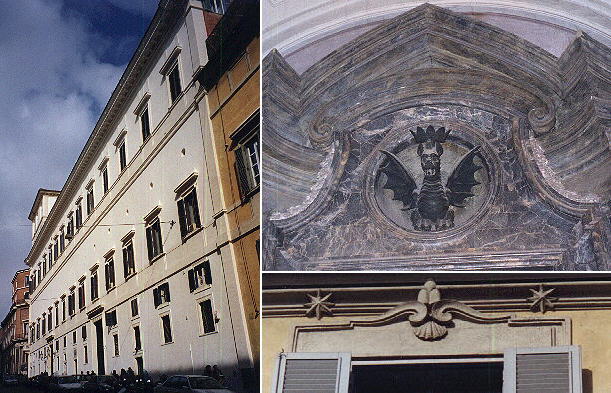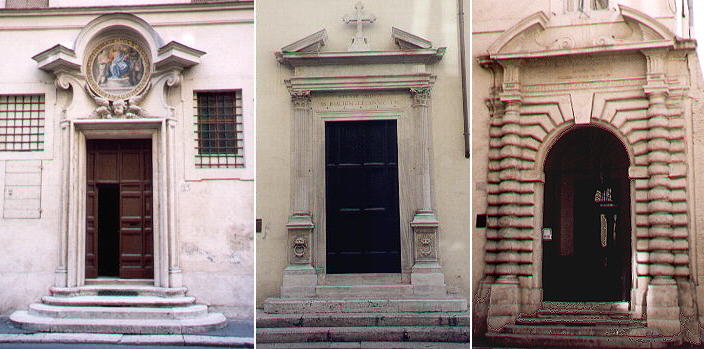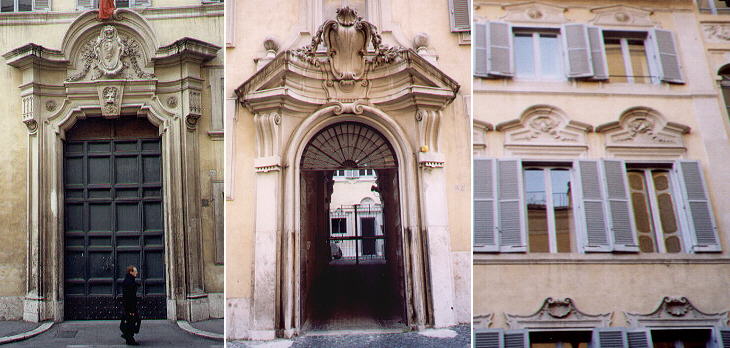  Le Quattro Fontane (Book 2) (Day 2) (Map A3) (View B7) (Rione Trevi) (Rione Monti)
In this page:
The plate shows the church of San Carlo and the four fountains built by Sixtus V at the crossing between two main streets: Strada Felice (after the name of Sixtus V, Felice Peretti) from TrinitÓ dei Monti to S. Maria Maggiore and Strada Pia from Porta Pia to the Quirinal or Monte Cavallo as it was then called. The view is taken from the green dot in the small 1748 map here below. In the description below the plate Vasi made reference to: 1) Le Quattro Fontane; 2) S. Carlo; 3) Palazzo Albani; 4) S. Maria Maggiore (Apsidal Fašade). The small map shows also 5) Palazzo Galloppi; 6) SS. Anna e Gioacchino. The dotted line in the small map delineates the border between Rione Trevi (left) and Rione Monti (right).
Apart from the cars everything else is unchanged. Unfortunately the traffic is always a nuisance and makes it difficult to properly examine Borromini's complex fašade of S. Carlo or as the Romans call it San Carlino (the small Carlo) because the church is said not to exceed the area of a pillar of St Peter's. The upper part was built after the death of Borromini. The Four Fountains
The four fountains represent the rivers Arno (top left) and Tiber (lower right) and
the goddesses Juno (top right) and Diana (lower left).
Confronted with a very tight budget, Borromini made use of his ingenuity and
of his mastering of stucco (see also his chapel in Palazzo di Propaganda Fide). The cost was in part born by Cardinal
Francesco Barberini, nephew of Pope Urbanus VIII, to whom a little chapel is dedicated. In addition to the formal coat of arms the Barberini are
remembered by a stucco relief showing the Sun of the Barberini.
The small monastery adjoining the church has a tiny cloister where Borromini proved again his talent. The right/reverse column motif of the balustrade proves it.
Palazzo Albani
Palazzo Albani is today known as Palazzo del Drago (dragon) because
when the fortunes of Cardinal Albani declined it was bought by the
Del Drago family (it still belongs to Lady Domietta del Drago),
whose symbol is a dragon (not to be confused with the Boncompagni's
dragon). The original building by Domenico Fontana was enlarged by
Alessandro Specchi for Pope Clemens XI Albani.
The entrance to the Monastery of S. Carlo (image on the left) was designed by Francesco Borromini.
In the early XVIIIth century the palace opposite
to the monastery (Palazzo Galloppi) was largely modified and its entrance (image on the left) is almost a copy of Borromini's entrance. It has
another entrance (central image) in the street between the palace and Giardini del Quirinale.
Next plate in Book 2: Piazza Barberini Next step in Day 2 itinerary: Chiesa di S. Andrea Apostolo e Noviziato de' Padri Gesuiti Next step in your tour of Rione Trevi: Palazzo Barberini Next step in your tour of Rione Monti: Chiesa di S. Bernardo alle Terme  or to Book 2 or to
The Coats of Arms of the Popes or
to My Home Page on Baroque Rome or to
My Home Page on Rome in the footsteps of an XVIIIth century traveller or to Book 2 or to
The Coats of Arms of the Popes or
to My Home Page on Baroque Rome or to
My Home Page on Rome in the footsteps of an XVIIIth century traveller
|
